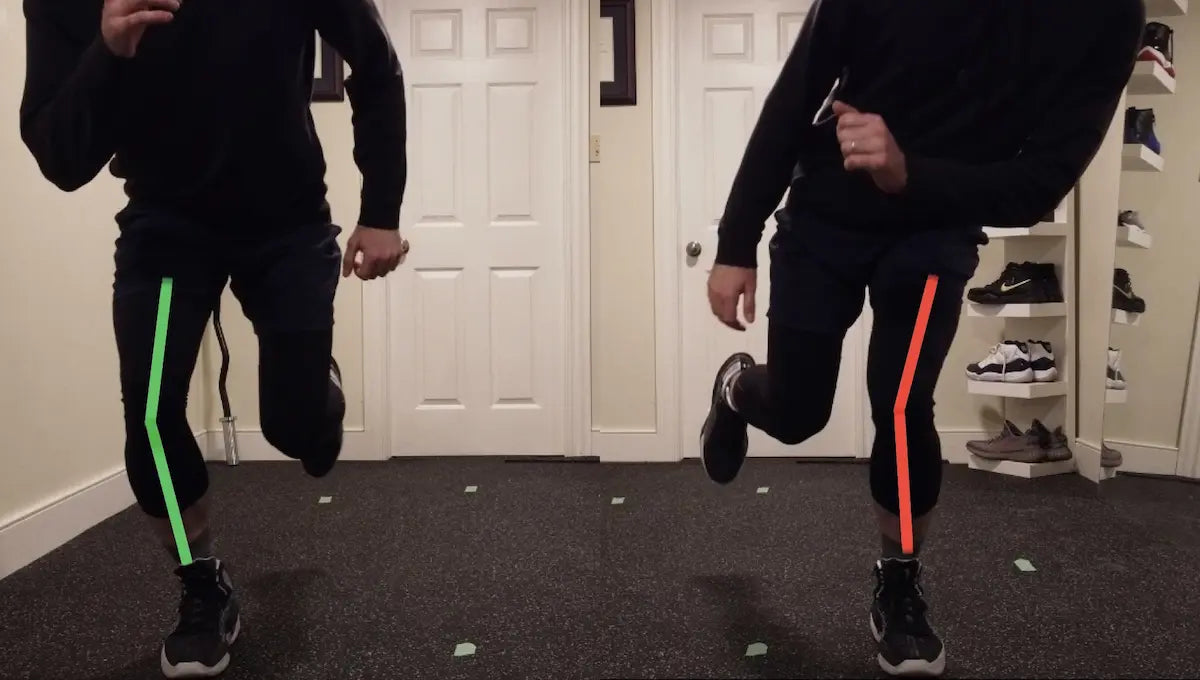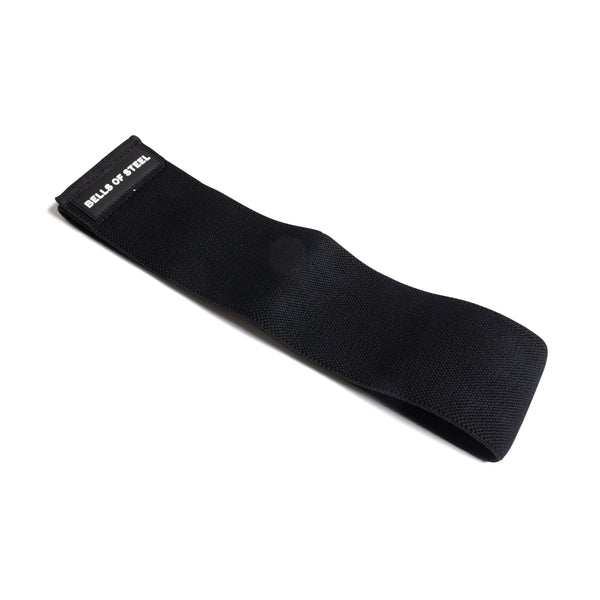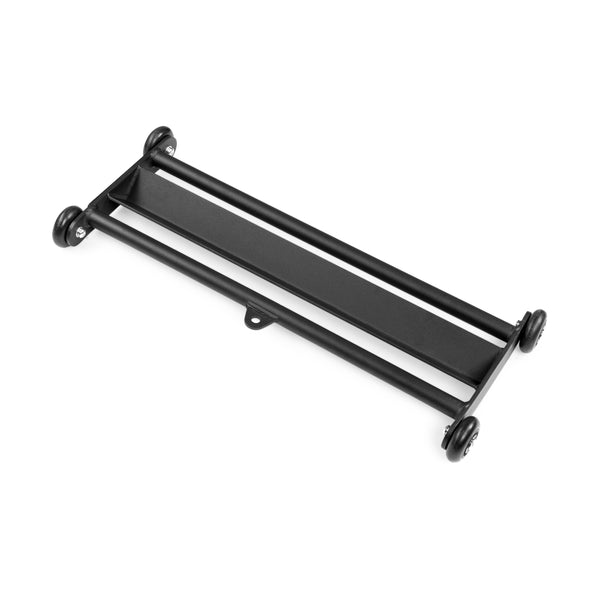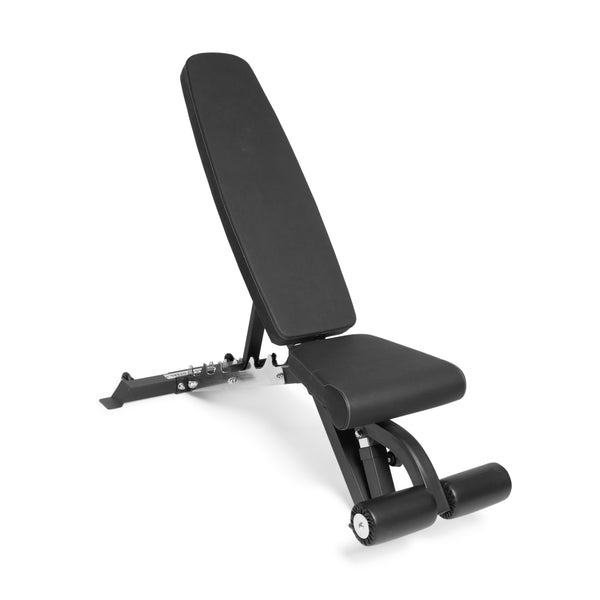The ACL plays a big role in knee stabilization and is often one of the first ligaments to suffer damage from impact, excessive load, or a weak lower body. This is why ACL injury prevention exercises are so important. If you play sports, then you likely know someone who has suffered an ACL injury. Hopefully, this person isn’t you. Luckily, there are several ways to strengthen your lower body to help take the burden off your ACL. That’s exactly what I will be addressing in this piece - how to avoid injury.
More specifically, I’ll be providing some ACL injury prevention exercises and a program designed to minimize your risk of sustaining a devastating Anterior Cruciate Ligament (ACL) tear.
We’ve all heard of athletes tearing their ACLs. We understand it’s in the knee. And we know that sometimes, it goes ‘POP!’ But how many of us know what the ACL does? Better yet, how many of us know how to protect ourselves from tearing this ligament? The ACL is one of four main ligaments of the knee. Its main purpose is to stabilize your knee by preventing your shin bone (tibia) from sliding forward on your thigh bone (femur). This becomes extremely important during movements like jumping, landing, or changing directions.
Like any soft tissue, the ACL tears when the forces imposed on it are stronger than it can handle. A full ACL rupture injury will not repair itself and requires surgical repair in most young healthy people. Anybody with a knee can tear their ACL. When it comes to sports-induced ACL tears, most are sustained by athletes that play sports requiring quick changes in directions, or explosive jumping movements - think football, basketball, and soccer (among many others).
- Female athletes are 3.5x more likely to tear their ACL than male athletes.
- ~ 200-350 thousand ACL reconstructive surgeries occur per year in the USA.
- ~ 20% of athletes who return to sport post-ACL repair surgery re-injure in 2 years.
- Recovery is an 8-12 month process, and some experts are now suggesting you don’t return to sport for up to 2 years post-surgery (see the previous bullet point about the rate of re-injury).
- The majority (70-78%) of these injuries in sport are non-contact, meaning it is often the result of a change of direction or landing from a jump with poor biomechanics.
- Valgus at the knee. Valgus may be a new term for some, but it is an important one. Think of valgus as being the opposite of bow-legged. It happens when your knee collapses toward the midline. This is a HUGE no-no when it comes to keeping your ACL intact.
- Not absorbing impact at the hip when landing. When you drop into a squat, your glutes and hamstrings turn on. These two muscle groups are massively important to preventing ACL tears. If you land from a jump without involving the hip, this force is translated to the knee.
- When landing/cutting/decelerating, combining knee valgus with a lack of hip involvement is a recipe for ACL disaster. But there is good news! There is a ton of evidence that a proper ACL prevention program can significantly reduce your risk of an ACL tear.
- Can be completed by anyone with an athletic background wanting to lessen their chance of an ACL tear. If you are a competitive athlete, we recommend that you begin this training program at least six weeks prior to the beginning of your season.
- Should take 15-20 minutes to complete.
- Should be completed 2-3x/week.
- Can be completed during a competitive season.
- Avoid Valgus at the Knee. This is where form matters! For all exercises below, Pay attention to how your knee behaves. You want to make sure that during all of these movements, the middle of the kneecap stays over your second toe, and doesn’t cave in toward the midline.
- Land With Two Feet (ALWAYS). Why put 100% of your body weight through one knee, when you can put 50% through both?
- Get the Hip Involved. When landing or squatting/lunging, you want to bend at the hip, knee and ankle. Remember, a lack of hip flexion means your glutes are not engaging effectively, and that is bad news for your knee when you’re landing or cutting.
Explosive, rapid movements that mimic the demands of the sport. This is the best way to prime your nervous system to react to potential threats on the court/field. See Box Drops and Lateral Bounding below. General lower extremity strengthening is an important part of any injury prevention.
The greatest hits are all you need - Squats, Deadlifts, RDLs Cleans, Bulgarian Split Squats. This part is beyond the scope of this discussion, but in sum: let the big dogs eat! The first ACL injury prevention exercise is to stand on one leg for 30-60 seconds with the knee bent 5-10°. Variations to increase difficulty include:
- Eyes closed.
- Bouncing a tennis ball against a wall.
- Placing the foot on an unstable surface (wobble board, towel, etc.).
- Place pieces of tape at 3, 5, 6, 7, 9, & 12 o’clock.
- Stand on your left leg and touch your right foot to 12 o’clock. Then move clockwise and touch 3, 5, 6, and 7 o’clock. Repeat with the other side, but counterclockwise.
- As you reach with your moving leg, work on bending at the ankle, knee, and hip and as always, pay attention to your knee alignment
- For this ACL injury prevention exercise, drop from a height and hold the squat position. This is your opportunity to work on landing with proper form.
- If your biomechanics are solid and you want to progress, follow the drop with a maximal jump out of the squat position. Your goal should be to have as little time spent in contact with the ground as possible.
Begin by standing on one leg in an athletic position, and jump laterally. Flex at the ankle, knee and hip to absorb impact, and (you are likely getting tired of me saying it at this point) be mindful of knee valgus!
Standing on one leg with a barbell or dumbbells in your hands, and a 5-10° bend at the knee, slowly hinge at the hips and lower your chest toward the ground. At the same time, the leg that isn’t on the ground swings up until both your torso and your leg is parallel with the ground.
For this ACL injury prevention exercise, you need strong elastic bands about 1-1.5ft off of the ground. The Light Commercial Rack is perfect for this, as it comes with adjustable pins that can hold a ton of tension. Lie on your back with your lower legs resting on the bands. Lift your hips off of the ground, so your only points of contact are your shoulders and your legs.
Keep your hips up and legs straight, and scissor kick as quickly as you can. After this, flip onto your stomach and position yourself so that when you bend your knees to 90°, your heels are in contact with the bands. Then quickly kick your heels into the bands in an alternating pattern.
These two ACL injury prevention exercises are designed to expose your hamstring to high velocity movements. Grit your teeth and go hammer time for 60 seconds. Research has shown that these are good as it gets for hamstring recruitment. Start on your knees and have a partner hold your ankles firmly on the ground.
Stabilize your spine by drawing your navel toward your back, and slowly let your body move toward the ground without bending at the waist. This is key! If you break at the waist, your hamstrings don't do any work. This is ideally a partner ACL injury prevention exercise, but I improvised by using the FID Bench, with 190 worth of Bells of Steel weight plates to offset my own weight. If you’re lucky enough to have one of these bad boys in your home gym, you already know the deal.
If not, click here to see what we’re talking about: Bells of Steel Glute Ham Slider That’s the workout! Building a more stable knee isn’t a full-time job. Like we said above, this program is designed to take 15-20 minutes, and be completed 2-3x/week whether you are just starting out or in the middle of a competitive season. We think it’s the perfect warmup for a strength session.
As you progress with the exercises and get more comfortable with the movements, you should notice that it gets easier and easier to engage your hip and control the position of your knee land/cut/decelerate. Feel free to set up a camera to track your progress every now and then. Slow-motion is your friend here.
Are you bending at the hip when you land? Is your knee staying in line with your toes? The ideal outcome? When you get on the field/court/other, you land on two feet, drop your hip when you land, and keep your knee in line with your toes as it bends. The only way to accomplish this is repetition with these ACL injury prevention exercises!
DISCLAIMER: This article is not intended to be a substitute for medical information, nor is it appropriate for individuals who are currently rehabilitating from ACL injury or surgery. If you have specific questions or concerns, please contact a physiotherapist or other sports medicine practitioner.
ABOUT THE AUTHOR This blog post is written by Connor Reid. He is a practising physiotherapist in Eastern Canada with a special interest in orthopedic/musculoskeletal injuries. He is a proud owner of a Bells of Steel Home Gym with the Light Commercial Rack as the centrepiece, and his goal when he lifts is to keep his 33-year-old body capable of stepping on any field/court and playing sports without injury.



